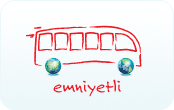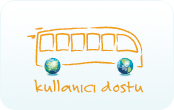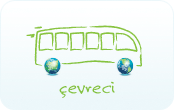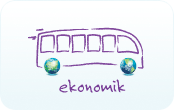|
Home  Örnek uygulamalar Örnek uygulamalar  Business managers Business managers
Information technologies
|
| | | Real-time information to customers | 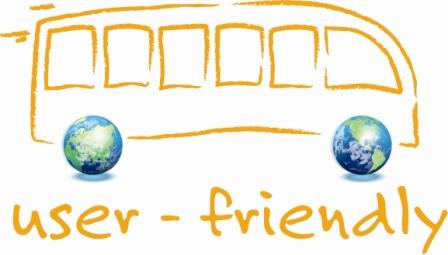 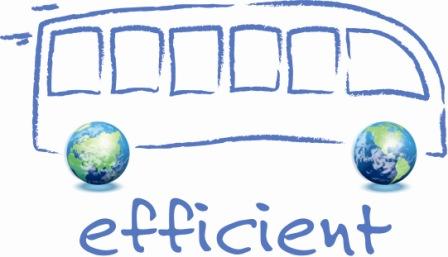 Real-time information available in terminals allows passengers to compare travel alternatives and to make the right transport choice in order to get to their destination in the most efficient way. Electronic displays, information screens and station announcements deliver this information. In case of delays, travel alternatives can be presented to passengers through these channels. Real-time information available in terminals allows passengers to compare travel alternatives and to make the right transport choice in order to get to their destination in the most efficient way. Electronic displays, information screens and station announcements deliver this information. In case of delays, travel alternatives can be presented to passengers through these channels.
Real-time information techniques have already been introduced in many cities throughout Europe, with an average passenger acceptance and appreciation level of 77%, i.e. in cities, such as Rome, Graz, Rotterdam and Berlin. Example: Graz provides of a real-time online presentation of the current traffic situation. Data from automatic traffic counters, taxis and traffic control optimisers are combined through a new model for data exploitation, which links data from various sources with each other. This collection of data provides essential information for operators and allows better short-term planning and ensures that faster action, including remedial action, can be taken. | For more information: Sustainable Urban Transport, Final report from the European project Trendsetter, pp. 26-28
http://www.civitas-initiative.org/docs1/CIVITAS_TRENDSETTER_Final_Policy_Report.pdf Traffic management, Workshop Graz, Trendsetter
http://www.trendsetter-europe.org/index.php?ID=3683 Mobitrans, l’information sur les bus et trams de Nantes en temps réel sur son mobile
http://www.altivis.fr/Mobitrans-l-information-sur-les.html Transports Publics Genevois (TPG) http://www.tpg.ch/ | Online planning |   Online planning tools help passengers make the smart choice for their mode of transport. Itineraries, best connections and other alternatives can be checked on the web. Delays and the current traffic situation can be seen as well and included in the decision-making process of the mode of transport. Online planning tools help passengers make the smart choice for their mode of transport. Itineraries, best connections and other alternatives can be checked on the web. Delays and the current traffic situation can be seen as well and included in the decision-making process of the mode of transport.
Example: Graz and Stockholm have both developed websites to offer such services to their customers. In Graz, approximately 20% of customers of the Mobility Centre have changed their mobility behaviour in favour of collective/public transport. As a result, the Graz’s BusBahnBim website has contributed significantly to the increase in the number of people travelling by collective/public transport. | For more information: BusBahnBim-Auskunft, Graz AG Verkehrsbetriebe
http://www.gvb.at/ Sustainable Urban Transport, Final report from the European project Trendsetter, p.24
http://www.civitas-initiative.org/docs1/CIVITAS_TRENDSETTER_Final_Policy_Report.pdf Transports Publics Genevois (TPG) http://www.tpg.ch/ | Localisation technologies & order bus services |   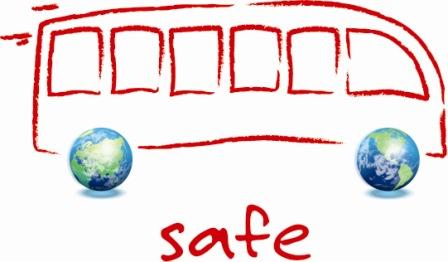 Localisation technologies, such as GPS, allow not only the development of warning and safety systems, but also provide important information to bus and coach passengers as well as to the drivers themselves. Localisation technologies, such as GPS, allow not only the development of warning and safety systems, but also provide important information to bus and coach passengers as well as to the drivers themselves.
In rural and sparsely populated areas, satellite navigation systems might be especially useful, when it comes to on-demand bus and coach services. Such systems are also effective in urban agglomerations. The integration of localisation technologies in mobile phones is another step towards the simplification of bus and coach services. Example: POSTBUS from Austria introduced such an ‘order bus service’ called BEHA-Points in rural areas of Austria. High-quality services are provided according to the actual demand of passengers. People can order the bus service either through pushing a button at BEHA-Terminals, or via SMS, Internet, phone or pre-ordering directly with the bus driver. The BEHA system has been broadly accepted by customers and a remarkable increase in cost-efficiency has been proven. In the city of Nantes, thanks to the MOBITrans passengers can obtain real-time information about the next two waiting times at bus and tram stations on their mobile phones. This allows passengers to better plan their time when taking public transport. | For more information: BEHA-Points: The flexible future for bus-stops, Postbus, IRU
http://www.iru.org/index/en_events_2005_eurochallenge_award_project Localisation par satellite et transports collectifs, Rapport de synthèse, ATEC-ITS France, pp.4-5
http://www.atec-tec.net/dossier/rencontrescongres/Rapport_Forum_100304.pdf Mobitrans : l’information sur les bus et trams de Nantes en temps réel sur son mobile, ALTIVIS
http://www.altivis.fr/Mobitrans-l-information-sur-les.html MOBITrans, un service innovant et gratuit d’information trafic en temps réel sur téléphone portable, Transdev
http://www.transdev.eu/Images/UploadPresse/Mobitrans.pdf Green paper on satellite navigation applications, European Commission, pp.4-6
http://eur-lex.europa.eu/LexUriServ/site/en/com/2006/com2006_0769fr01.pdf | | |
|
|
|
|
|
|
|
